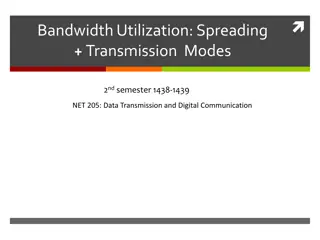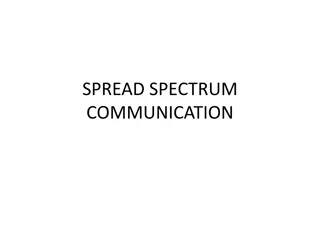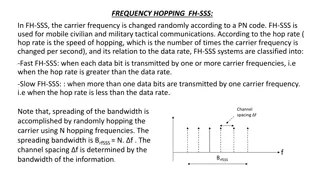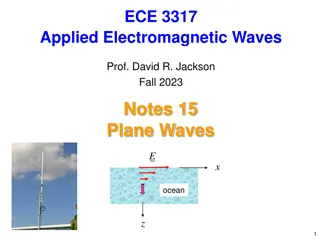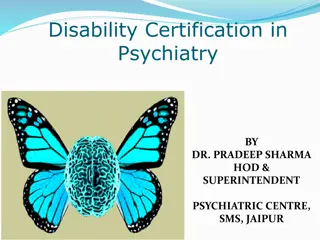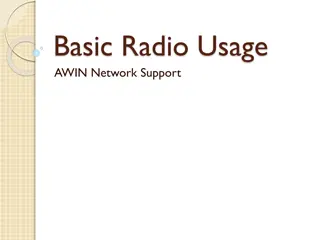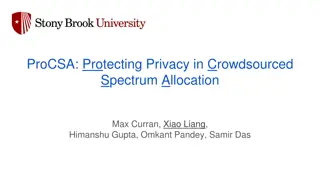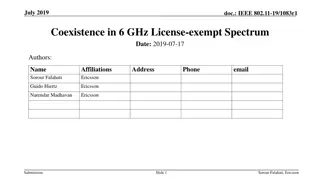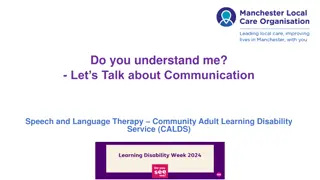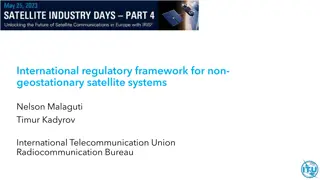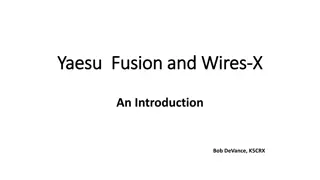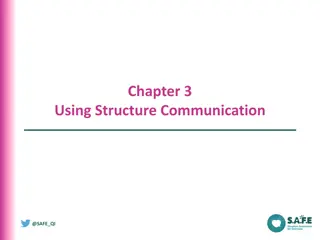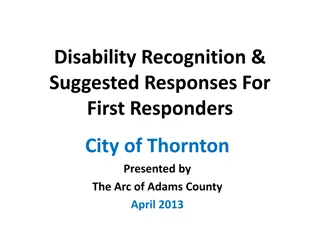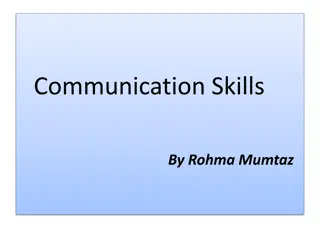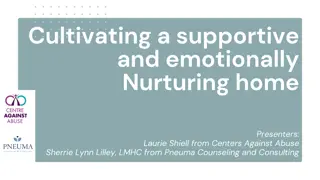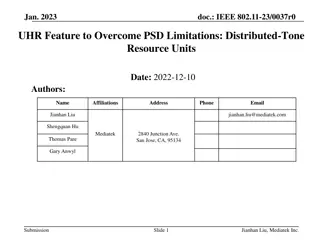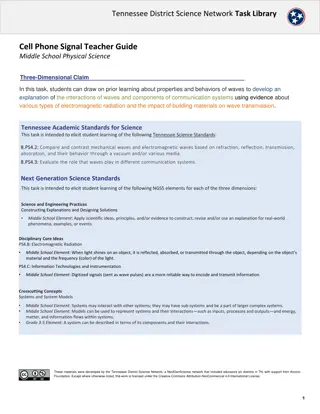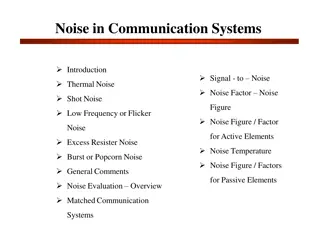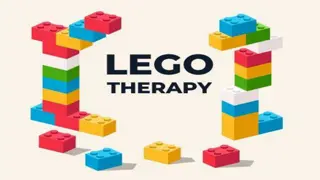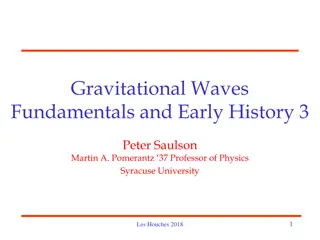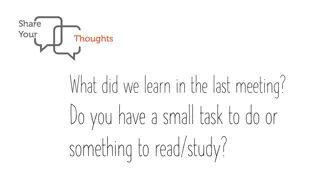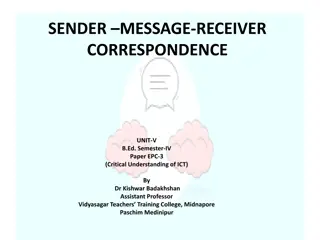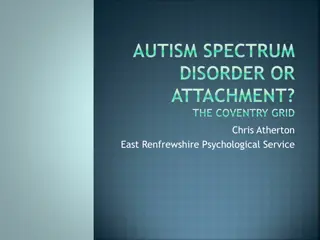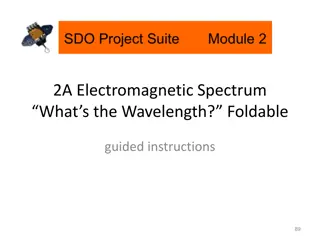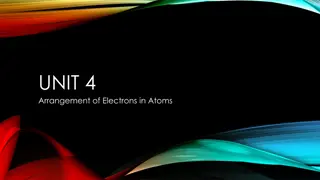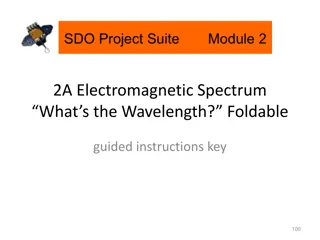Understanding Spread Spectrum Communication Systems
Spread spectrum techniques involve spreading a signal over a wide bandwidth for various reasons, such as secure communication, resistance to interference, noise, and jamming. This summary introduces Direct Sequence Spread Spectrum (DSSS), Frequency Hopping Spread Spectrum (FHSS), Time Hopping, and hybrid systems. Pseudo noise (PN) code, Shannon and Hartely channel capacity theorem, and the use of PN code symbols are discussed with illustrations of DSSS phases, a general model of spread spectrum systems, and RF bandwidth characteristics. Practical examples and explanations of DSSS implementation are provided for better understanding.
- Spread Spectrum
- Direct Sequence Spread Spectrum
- Frequency Hopping Spread Spectrum
- Pseudo Noise Code
- Communication Systems
Download Presentation

Please find below an Image/Link to download the presentation.
The content on the website is provided AS IS for your information and personal use only. It may not be sold, licensed, or shared on other websites without obtaining consent from the author. Download presentation by click this link. If you encounter any issues during the download, it is possible that the publisher has removed the file from their server.
E N D
Presentation Transcript
SPREAD SPECTRUM In spread spectrum (SS), we spread a signal over a wide bandwidth (larger than BW in traditional communication systems) - These techniques are used for a variety of reasons, including the establishment of secure communications, increasing resistance to natural interference, noise and jamming Spread Spectrum systems: Direct Sequence Spread Spectrum (DSSS) Frequency Hopping Spread Spectrum (FHSS) Time Hopping (THSS) Hybrid
Pseudo noise (PN) code is required in SS systems Pseudo noise (PN) code symbols are called chips Chip rate or PN code rate Rc >> Roriginal signal
Theoretical Justification Shannon and Hartely channel capacity theorem C=B log2(1+S/N) S/N is low for SS systems, so roughly C/B 1.433 * S/N or N/S B/C To send error-free information for a given N/S in a channel, one need only perform the fundamental signal-spreading operation: increase B. Dr. Samah A. Mustafa
Direct Sequence Spread Spectrum DSSS DSSS phase-modulates the original signal with a continuous string of pseudonoise (PN) code symbols, each of which has a much shorter duration than an information bit.
General Model of Spread Spectrum System Receiver uses same sequence to demodulate signal
DSSS Transmitter DSSS Receiver
RF bandwidth of DSSS Power distribution {(sinx)/x}2 .. Null-to-null bandwidth is 2Rc 90% of the power in the main-lobe Other modulations like QPSK , MFSK . Dr. Samah A. Mustafa
Gains Immunity from various noise and multipath distortion Including jamming Can hide/encrypt signals Only receiver who knows spreading code can retrieve signal Several users can share same higher bandwidth with little interference Cellular telephones Code division multiple access (CDMA)
Process Gain, typically 10-60 dB GP Benefits: Resistance to Interference and Anti-jamming Effects Dr. Samah A. Mustafa
More benefits Resistance to Interception Resistance to Fading Addressing High resolution ranging Multi access technique CDMA Dr. Samah A. Mustafa
Code Division Multiple Access (CDMA) Multiplexing Technique used with spread spectrum It plays a critical role in building efficient, robust, and secure radio communication systems Start with data signal rate D Called bit data rate Break each bit into k chips according to fixed pattern specific to each user User s code New channel has chip data rate kD chips per second E.g. k=6, three users (A,B,C) communicating with base receiver R Code for A = <1,-1,-1,1,-1,1> Code for B = <1,1,-1,-1,1,1> Code for C = <1,1,-1,1,1,-1>
CDMA Explanation Consider A communicating with base Base knows A s code Assume communication already synchronized A wants to send a 1 Send chip pattern <1,-1,-1,1,-1,1> A s code A wants to send 0 Send chip[ pattern <-1,1,1,-1,1,-1> Complement of A s code Decoder ignores other sources when using A s code to decode Orthogonal codes
CDMA for DSSS n users each using different orthogonal PN sequence Modulate each users data stream Using BPSK Multiply by spreading code of user
Frequency Hopping Spread Spectrum (FHSS) Signal broadcast over series of frequencies Receiver hops between frequencies in sync with transmitter Eavesdroppers hear unintelligible blips Jamming on one frequency affects only a few bits
Basic Operation Typically 2k carriers frequencies forming 2k channels Channel spacing corresponds with bandwidth of input Each channel used for fixed interval Ex. 300 ms in IEEE 802.11


